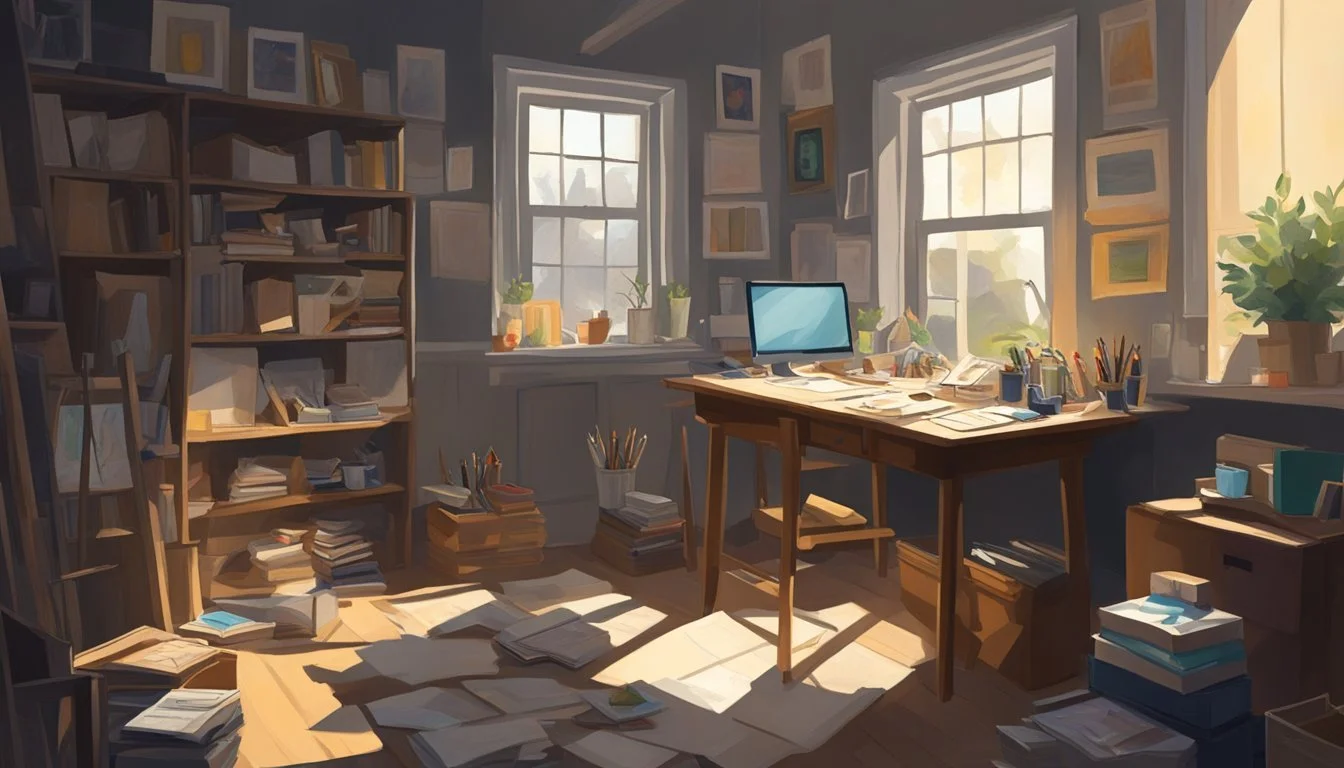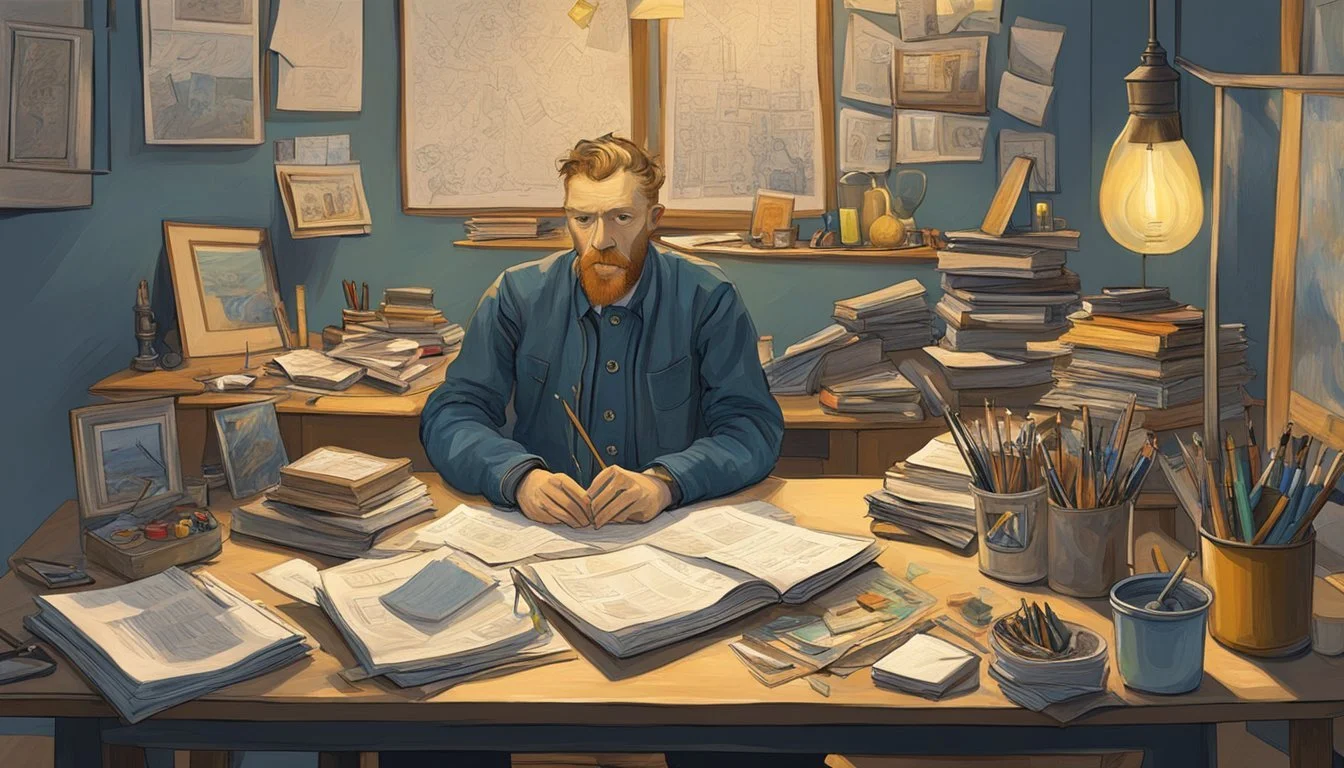Van Gogh's Final Days: The Real Mystery Behind 'Loving Vincent'
Unraveling the Artist's Last Moments
Vincent van Gogh's final days remain shrouded in mystery, captivating art enthusiasts and historians alike. The Dutch post-impressionist painter's life ended tragically in July 1890, leaving behind a legacy of vibrant artworks and unanswered questions.
The animated biopic "Loving Vincent" explores van Gogh's last days through a unique lens, bringing his paintings to life through over 60,000 hand-painted frames. While the film cannot provide definitive answers about the artist's death, it offers a visually stunning journey into his world and the people who inhabited it.
Van Gogh's last painting, "Tree Roots," provides a tantalizing clue to his final moments. Recently, researchers identified the exact location where he created this work, offering a glimpse into his surroundings on the day he suffered a fatal gunshot wound. This discovery adds another piece to the puzzle of van Gogh's enigmatic end, fueling continued interest in his life and art.
Van Gogh's Life and Artistry
Vincent van Gogh's tumultuous life and revolutionary artistic style left an indelible mark on the world of art. His vibrant use of color and expressive brushstrokes continue to captivate audiences worldwide.
Biographical Background
Born in 1853 in the Netherlands, Vincent van Gogh initially pursued careers as an art dealer and missionary before dedicating himself to painting at age 27. He struggled with mental health issues throughout his life, which influenced his art and relationships.
Van Gogh's artistic career spanned just a decade, during which he produced over 2,100 artworks. He lived in various places across Europe, including Paris and Arles, where he experienced both creative breakthroughs and personal setbacks.
Despite selling only one painting during his lifetime, Van Gogh's work gained recognition after his death in 1890. His letters to his brother Theo provide valuable insights into his thoughts and artistic process.
Signature Style and Artistic Contributions
Van Gogh's distinctive style is characterized by bold colors, energetic brushstrokes, and thick application of paint known as impasto. He often used complementary colors to create visual contrast and emotional intensity in his works.
His most famous paintings include "The Starry Night" and "Sunflowers." These works showcase his ability to infuse ordinary subjects with profound emotion and movement through his unique techniques.
As a post-impressionist, Van Gogh moved beyond realistic representation to express his inner vision. He painted landscapes, portraits, and still lifes with equal fervor, often working directly from nature or memory.
Van Gogh's innovative approach to color and form influenced subsequent generations of artists. His work bridged the gap between 19th-century impressionism and 20th-century expressionism, cementing his place in art history.
The Mystery of Van Gogh's Death
Vincent van Gogh's death remains one of the most intriguing and contested events in art history. The circumstances surrounding his final days have sparked debate and speculation among scholars and art enthusiasts for over a century.
Sequence of Events Leading to the Tragedy
On July 27, 1890, Van Gogh left the Auberge Ravoux in Auvers-sur-Oise to paint. He returned that evening with a gunshot wound to his chest. The artist claimed he had shot himself in a nearby field.
Despite the severity of his injury, Van Gogh survived for two more days. His brother Theo rushed to his bedside, where they spent Van Gogh's final hours together.
On July 29, 1890, Vincent van Gogh passed away in his room at the Auberge Ravoux. His last words to Theo were reportedly, "The sadness will last forever."
Controversies Surrounding the Death
While suicide has long been accepted as the cause of Van Gogh's death, alternative theories have emerged. Some researchers argue that the artist may have been murdered.
Steven Naifeh and Gregory White Smith, in their biography "Van Gogh: The Life," suggest that local boys may have accidentally shot the artist. They point to inconsistencies in the suicide narrative, such as the missing gun and unusual angle of the wound.
Other scholars maintain that Van Gogh's history of mental illness and his letters support the suicide theory. The debate continues, with new evidence and interpretations regularly emerging.
Van Gogh's Final Days and Last Works
Vincent van Gogh spent his final weeks in Auvers-sur-Oise, France, painting feverishly and creating some of his most iconic works. His time there was marked by intense creativity and declining mental health.
The Final Painting: Tree Roots
Van Gogh's last painting, "Tree Roots," offers insights into his final day. The artwork depicts gnarled tree roots and stumps on a hillside. In 2020, Wouter van der Veen of the Van Gogh Institute identified the exact location where Van Gogh painted this piece.
The discovery was made using a vintage postcard showing a cyclist on a road in Auvers-sur-Oise. Van der Veen matched the tree roots in the postcard to those in Van Gogh's painting.
This finding sheds light on Van Gogh's movements on July 27, 1890, the day he fatally shot himself. It suggests he was working on "Tree Roots" just hours before his death.
The Day-to-Day in Auvers-sur-Oise
Van Gogh arrived in Auvers-sur-Oise on May 20, 1890. He stayed at the Auberge Ravoux and spent his days painting the surrounding landscapes. The artist was particularly drawn to the wheat fields and the main road through town.
During this period, Van Gogh created numerous masterpieces, including "Wheatfield with Crows." This painting, often mistakenly thought to be his last, captures the brooding atmosphere of the French countryside.
Van Gogh's routine in Auvers-sur-Oise involved waking early and venturing out with his canvas. He would often return to the inn for meals, then continue painting until dusk.
Exploring the Depths of Van Gogh's Mind
Vincent van Gogh's final days were marked by intense emotional turmoil and artistic fervor. His mental state and relationships provide crucial insight into his last works and ultimate fate.
Vincent's Mental Health and Emotional State
Van Gogh struggled with mental health issues throughout his life. Depression and anxiety plagued him, often leading to periods of intense creativity followed by deep despair. In his later years, these episodes became more frequent and severe.
The artist's time in France exacerbated his condition. The vibrant colors and landscapes of Provence inspired him, but also seemed to intensify his emotional instability. Van Gogh's famous ear-cutting incident in Arles highlighted the depths of his mental anguish.
His final months in Auvers-sur-Oise were particularly tumultuous. Despite moments of clarity and productivity, Van Gogh's letters reveal a man grappling with inner demons and existential questions.
Letters and Testimonies from the Era
Van Gogh's correspondence, particularly with his brother Theo, offers invaluable insights into his state of mind. These letters reveal a complex individual, oscillating between hope and despair.
In his final letter to Theo, dated July 23, 1890, Vincent wrote:
"I try to do as well as certain painters whom I have greatly loved and admired."
This poignant statement suggests a mix of ambition and self-doubt that characterized his final days.
Testimonies from locals in Auvers-sur-Oise paint a picture of a troubled yet passionate artist. Dr. Paul Gachet, who treated Van Gogh, noted his patient's intense dedication to his craft, even as his mental health deteriorated.
The Lasting Impact of Van Gogh's Legacy
Vincent van Gogh's influence on art and culture continues to grow long after his death. His unique style and emotional depth resonate with audiences worldwide, inspiring countless artists and captivating millions of admirers.
Posthumous Recognition and Fame
Van Gogh's work gained immense popularity in the decades following his death. The Van Gogh Museum in Amsterdam, dedicated to preserving and showcasing his art, attracts over 2 million visitors annually. His paintings now sell for astronomical sums, with "Portrait of Dr. Gachet" fetching $82.5 million in 1990.
Van Gogh's distinctive style, characterized by bold colors and expressive brushstrokes, influenced numerous art movements. His impact extends beyond painting to fields such as literature, music, and film.
Adaptations and Tributes in Popular Culture
Van Gogh's life and art have inspired numerous cinematic works. The 1956 film "Lust for Life," starring Kirk Douglas, brought the artist's tumultuous life to the big screen. More recently, "Loving Vincent" (2017), directed by Dorota Kobiela and Hugh Welchman, presented Van Gogh's story through a groundbreaking animated film composed entirely of oil paintings.
The artist's iconic works, such as "The Starry Night" and "Sunflowers," are frequently referenced in popular culture. These images appear on everything from coffee mugs to clothing, cementing Van Gogh's status as one of the most recognizable artists in history.
Insights from Leading Van Gogh Scholars
Recent discoveries by prominent researchers have shed new light on Vincent van Gogh's final days and artistic process. Their findings offer fresh perspectives on the artist's last works and movements.
Wouter van der Veen's Findings
Wouter van der Veen, scientific director of the Van Gogh Institute, made a significant breakthrough in 2020. He identified the exact location where Van Gogh painted his final work, "Tree Roots." This discovery came from analyzing a century-old postcard depicting Auvers-sur-Oise, France.
Van der Veen's research provides crucial context for Van Gogh's last day. It suggests the artist was actively working until shortly before his death, contradicting some previous theories. The location, a hillside near the Auberge Ravoux inn, offers new insights into Van Gogh's artistic choices and mental state.
The Contributions of Contemporary Experts
Louis van Tilborgh, senior researcher at the Van Gogh Museum, has been instrumental in authenticating and dating Van Gogh's works. His expertise has helped clarify the timeline of the artist's final months.
Other scholars have focused on Van Gogh's techniques and materials. Their research has revealed details about his painting process and the evolution of his style in his last days. These findings contribute to a more nuanced understanding of Van Gogh's artistic legacy.
Experts have also examined Van Gogh's letters and accounts from contemporaries. This approach has provided valuable context for interpreting his final works and actions.




